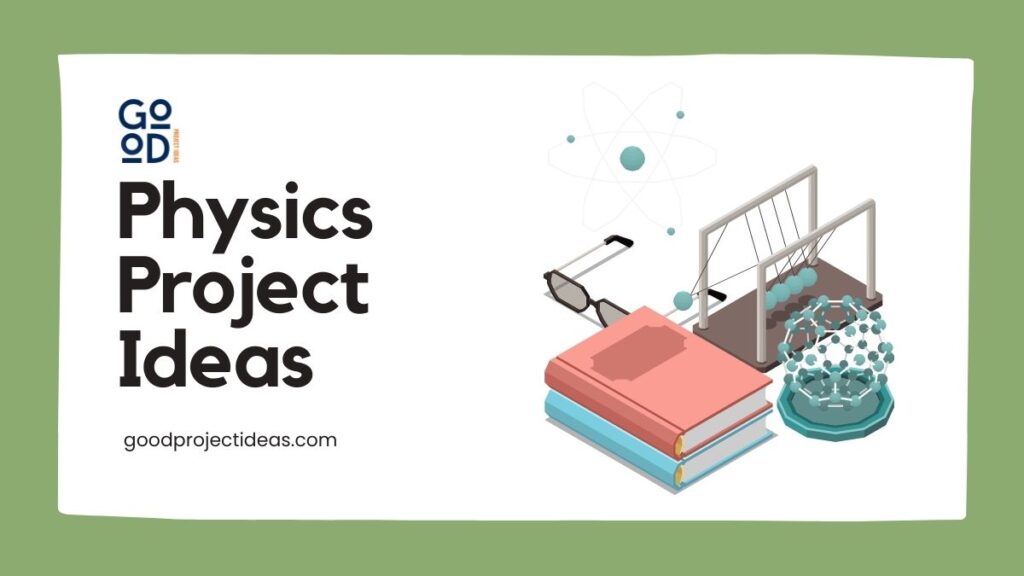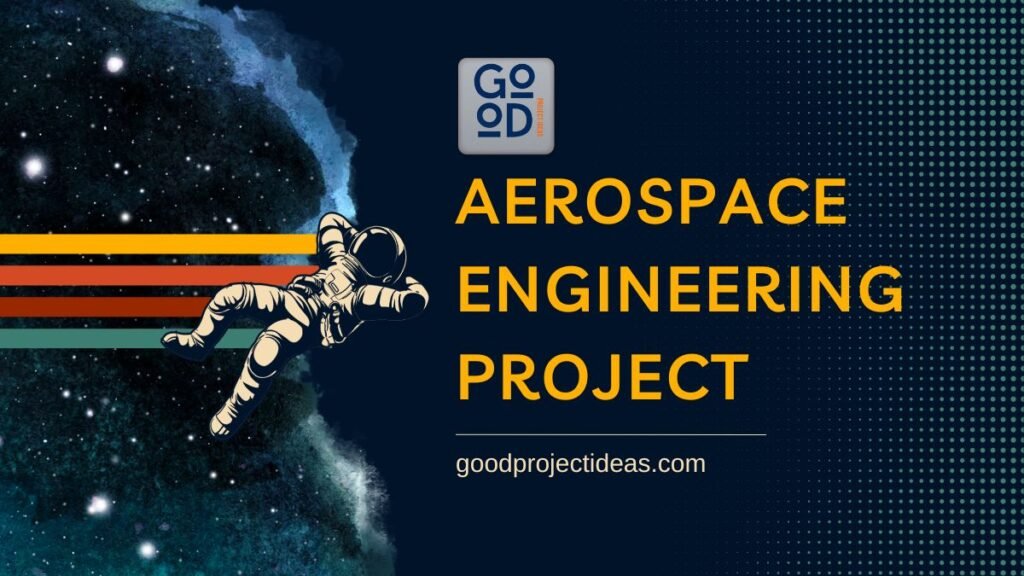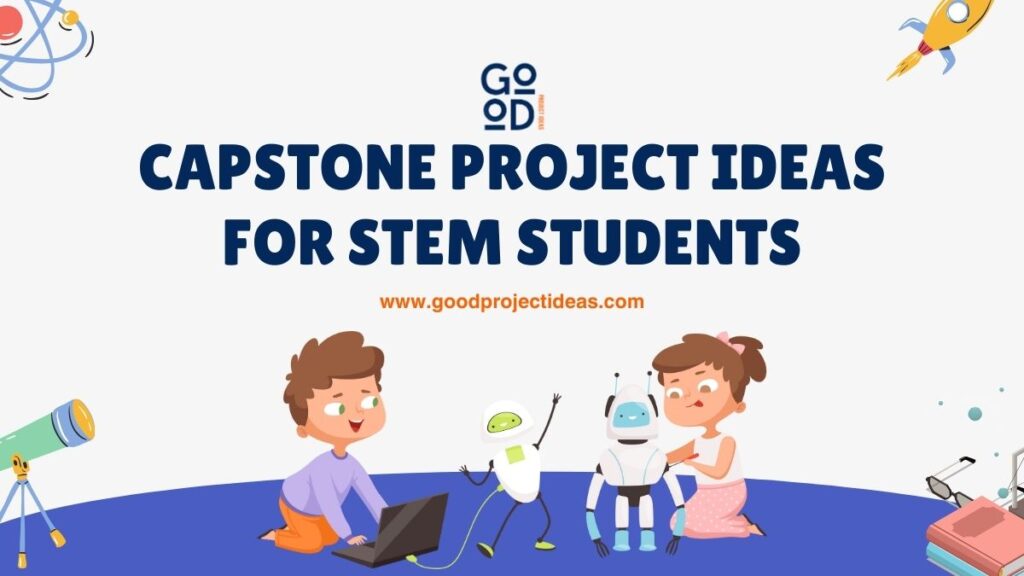Explore engaging physics project ideas for all levels. Find simple experiments and complex challenges in mechanics, electromagnetism, and more to spark curiosity and deepen your understanding.
Physics studies matter, energy, and the forces that shape our universe. It mixes theory with real-world applications, offering projects for every level, from high school to college. These projects help you understand key principles and tackle advanced topics.
This guide features physics project ideas to ignite curiosity and deepen your knowledge.
Physics Project Ideas PDF
Why Do Physics Projects Matter?
Why Physics Projects Matter:
- Hands-On Learning: Experiments make abstract concepts tangible and fun.
- Problem-Solving Skills: Projects boost critical thinking and data analysis.
- Creativity and Innovation: Students explore different approaches and ideas.
- Real-World Applications: Concepts apply to everyday life and industries.
- Preparation for Higher Studies: Builds a strong foundation for advanced STEM learning.
- Developing Research Skills: Teaches planning, execution, and analysis of experiments.
Physics projects deepen understanding and highlight the connections between scientific fields.
Physics Project Ideas
Check out physics project ideas:-
Mechanics
- Projectile Motion: Study factors affecting projectile range and trajectory.
- Pendulum Motion: Analyze how pendulum period varies with length.
- Rube Goldberg Machine: Build a complex machine for a simple task.
- Newton’s Cradle: Explore momentum and energy conservation.
- Car Crash Simulation: Model impact forces in a car crash.
- Simple Harmonic Motion: Study mass-spring system oscillations.
- Center of Mass: Find the center of mass of irregular objects.
- Rolling Motion: Investigate sphere rolling down an incline.
- Collisions: Study elastic and inelastic collisions.
- Torque and Rotation: Explore torque and rotational motion.
Thermodynamics
- Heat Transfer: Test different thermal insulators.
- Stirling Engine: Build and study a Stirling engine.
- Thermoelectric Effect: Generate electricity from heat.
- Cooling Curve: Study water’s cooling process.
- Solar Oven: Design and test a solar cooker.
- Heat Capacity: Measure specific heat of substances.
- Refrigeration Cycle: Model a refrigerator.
- Entropy: Investigate entropy with mixing experiments.
- Carnot Engine: Study a Carnot engine’s efficiency.
- Blackbody Radiation: Explore blackbody radiation.
Electromagnetism
- Induction: Demonstrate electromagnetic induction.
- Faraday’s Law: Build a simple generator.
- Wireless Power: Investigate wireless power transfer.
- Magnetic Levitation: Create magnetic levitation.
- Railgun: Construct a small railgun.
- DC Motor: Build a simple DC motor.
- EM Waves: Study properties of EM waves.
- Capacitance: Measure capacitor properties.
- Transformers: Build and study a transformer.
- Magnetic Fields: Map magnetic fields with iron filings.
Optics
- Lenses and Mirrors: Study focal length and magnification.
- Diffraction: Explore light diffraction and interference.
- Polarization: Investigate light polarization.
- Fiber Optics: Study light transmission in fibers.
- Holography: Create simple holograms.
- Light Intensity: Measure light intensity from sources.
- Spectroscopy: Study light spectra.
- Total Internal Reflection: Investigate with a water tank.
- Optical Instruments: Build telescopes and microscopes.
- Color Mixing: Explore color mixing with LEDs.
Waves and Sound
- Standing Waves: Investigate standing waves on a string.
- Sound Waves: Study sound wave properties.
- Resonance: Explore resonance in musical instruments.
- Ultrasound: Study ultrasound applications.
- Seismic Waves: Model seismic wave propagation.
- Wave Interference: Demonstrate interference in a ripple tank.
- Doppler Effect: Study the Doppler effect.
- Echoes: Investigate echoes and reverberation.
- Sound Intensity: Measure sound intensity levels.
- String Instruments: Build and tune a string instrument.
Modern Physics
- Photoelectric Effect: Demonstrate and measure Planck’s constant.
- Quantum Tunneling: Explore quantum tunneling.
- Relativity: Study time dilation and length contraction.
- Particle Physics: Build a cloud chamber.
- Nuclear Decay: Investigate nuclear decay and half-life.
- Superconductivity: Explore superconductivity.
- Double-Slit Experiment: Demonstrate wave-particle duality.
- Decay Simulation: Simulate radioactive decay.
- Quantum Entanglement: Study photon entanglement.
- Dark Matter: Explore dark matter evidence.
Astrophysics
- Planetary Motion: Model planetary orbits.
- Exoplanet Detection: Simulate exoplanet transit method.
- Star Formation: Study star formation processes.
- Galactic Rotation: Investigate galactic rotation curves.
- Gravitational Waves: Study gravitational wave detection.
- Solar Activity: Observe sunspots and flares.
- CMB Radiation: Explore cosmic microwave background.
- Black Holes: Study black hole properties.
- Asteroid Impact: Simulate asteroid impacts.
- Telescope: Build and use a simple telescope.
Fluid Mechanics
- Bernoulli’s Principle: Demonstrate fluid flow principles.
- Viscosity: Measure fluid viscosity.
- Flow Types: Compare laminar and turbulent flow.
- Hydraulic Lift: Build a hydraulic lift.
- Vortex Formation: Study fluid vortices.
- Buoyancy: Investigate buoyancy principles.
- Fluid Density: Measure fluid density changes.
- Surface Tension: Study effects of surface tension.
- Capillary Action: Investigate capillary action.
- Aerodynamics: Explore aerodynamics with a wind tunnel.
Experimental Design and Methodology
Experimental design outlines how a study is conducted, including methods for collecting and analyzing data. A strong design is crucial for valid results.
Key Components
- Independent Variable: The variable changed by the researcher.
- Dependent Variable: The variable measured or observed.
- Control Group: The group not exposed to the independent variable, used for comparison.
- Experimental Group: The group exposed to the independent variable.
- Randomization: Randomly assigning participants to minimize bias.
Types of Experimental Designs
- True Experiment: Participants are randomly assigned to experimental and control groups.
- Quasi-Experiment: No random assignment; controls for confounding variables.
- Pre-Experimental Design: Lacks control groups and random assignment, the weakest design.
Data Collection and Analysis
- Collection Methods: Observation, surveys, interviews, measurements.
- Analysis: Using statistical methods to interpret data.
- Visualization: Graphically presenting data for clarity.
Key Considerations
- Validity: Measures what it’s intended to measure.
- Reliability: Yields consistent results upon repetition.
- Ethics: Protects participants’ rights and well-being.
- Control of Variables: Minimizes the influence of extraneous factors.
Adhering to these principles ensures your experiments produce reliable and meaningful results.
Tips for Successful Physics Projects
Check out the tips for successful physics projects:-
Planning and Preparation
- Pick a Topic You Love: Stay motivated.
- Do Your Research: Know the physics concepts.
- Set Clear Goals: Define what you want to achieve.
- Make a Plan: Outline steps, materials, and timeline.
- Gather Materials: Have everything you need.
Experimentation and Data Collection
- Control Variables: Manage factors affecting results.
- Measure Accurately: Use the right tools.
- Record Data: Keep detailed notes.
- Repeat Trials: Ensure reliability.
- Analyze Data: Use graphs and statistics.
Presentation and Communication
- Explain Clearly: Make your project easy to understand.
- Use Visuals: Add diagrams and graphs.
- Show Understanding: Demonstrate your knowledge.
- Handle Questions: Be prepared to discuss.
These tips will help you create a successful and engaging physics project.
Safety Considerations
Essential Safety Precautions for Physics Experiments
Personal Protective Equipment (PPE)
- Safety Goggles: Protect your eyes.
- Gloves: Use for chemicals or hot items.
- Closed-Toe Shoes: Protect your feet.
- Lab Coat: Optional, for spill protection.
Laboratory Safety
- Clear Workspace: Keep it organized.
- Fire Safety: Know extinguisher locations.
- Chemical Safety: Handle and dispose of carefully.
- Electrical Safety: Avoid water and unplug devices.
- Emergency Procedures: Know how to respond to accidents.
Experiment-Specific Safety
- Projectile Motion: Ensure a safe area.
- Electricity: Use correct voltage and insulation.
- Heat: Be cautious with hot items.
- Chemicals: Follow handling and disposal guidelines.
Follow these tips to stay safe during your experiments.
Which project can be made from physics?
Check out the projects to made from physics:-
Mechanics
- Projectile Motion: Study basketball shots or water balloon paths.
- Simple Machines: Test levers, pulleys, and inclined planes.
- Friction: Measure how different surfaces affect friction.
Electricity and Magnetism
- Electromagnets: Build and test their strength.
- Electric Circuits: Create and compare series and parallel circuits.
- Static Electricity: Explore its generation and effects.
Optics
- Light Refraction: Use lenses and prisms to bend light.
- Color Spectrum: Break down white light into its colors.
- Human Eye: Study depth and color perception.
Thermodynamics
- Heat Transfer: Test conduction, convection, and radiation.
- Energy Efficiency: Find ways to save energy.
- Thermal Expansion: See how heat affects materials.
Waves
- Sound Waves: Experiment with echoes and resonance.
- Light Waves: Investigate diffraction and polarization.
- Water Waves: Observe waves in a ripple tank.
How do I find project ideas?
Check out the best tips to find project ideas:-
Leverage Your Interests
- Hobbies: What do you enjoy doing?
- Skills: What are you good at?
- Curiosity: What questions are you curious about?
Explore Your Surroundings
- Identify Problems: What issues do you notice in your community?
- Observe Trends: What’s popular or in demand?
- Current Events: What events catch your attention?
Brainstorm and Mind Map
- Free Writing: Note down any ideas.
- Mind Mapping: Connect related ideas visually.
- Keyword Brainstorming: Generate ideas from keywords.
Seek Inspiration
- Online Resources: Check out websites and social media.
- Competitions: Join hackathons or contests.
- Mentorship: Get advice from experienced people.
- Collaboration: Work with friends or colleagues.
Consider Your Resources
- Time: How much time can you commit?
- Budget: What’s your financial limit?
- Skills: What skills do you need?
Validate Your Idea
- Market Research: Is there a demand?
- Feasibility: Can it be done practically?
- Feedback: Get opinions from others.
Combining personal interest with practical considerations and creativity often leads to the best project ideas.
Physics Project Ideas for College Students
Check out physics project ideas for college students:-
Mechanics and Thermodynamics
- Fluid Dynamics: Test Bernoulli’s principle.
- Thermal Physics: Study heat transfer.
- Waves: Explore wave properties.
Electricity and Magnetism
- Electromagnetism: Build electromagnets.
- Circuits: Design electrical circuits.
- Electronics: Create simple devices.
Optics
- Fiber Optics: Test light in fibers.
- Lasers: Study lasers.
- Holography: Make and use holograms.
Modern Physics
- Quantum Mechanics: Explore quantum basics.
- Nuclear Physics: Study radioactivity.
- Astrophysics: Research celestial objects.
Interdisciplinary Projects
- Physics and Biology: Investigate biomechanics.
- Physics and Engineering: Build a device.
- Physics and Environmental Science: Study energy or climate.
Physics Project Ideas for Class 9
Check out physics project ideas for class 9:-
Simple and Engaging Projects
- Homemade Battery: Use copper and zinc.
- Simple Circuit: Connect a battery, wire, and bulb.
- Balloon Car: Move a car with air pressure.
- Windmill Model: Build a small windmill.
- Magnetic Levitation: Float an object with magnets.
Exploring Forces and Motion
- Inclined Plane: Test angle vs. force.
- Friction: Compare types of friction.
- Centripetal Force: Show with a spinning object.
- Projectile Motion: Track a projectile’s path.
Light and Sound
- Rainbow Creation: Use a prism.
- Sound Waves: Test with tuning forks.
- Echoes: Explore sound reflections.
Physics Project Ideas for class 10
Check out physics project ideas for class 10:-
Light and Optics
- Refraction: Light in water, glass, or prisms.
- Convex Lens: Measure focal length.
- Eye Defects: Study vision issues.
- Optical Fibers: Explore uses.
Electricity and Magnetism
- Ohm’s Law: Verify it.
- Circuits: Build series and parallel.
- Electric Motor: Make a simple motor.
- Induction: Show electromagnetic induction.
- Magnetic Field: Map a bar magnet’s field.
Sound
- Echoes: Study sound reflections.
- Sound Speed: Measure in air.
- Tuning Fork: Check frequency factors.
- Music Waves: Explore sound waves in music.
Heat and Temperature
- Thermal Expansion: Test solids, liquids, gases.
- Specific Heat: Measure for materials.
- Heat Transfer: Study conduction, convection, radiation.
- Thermodynamics: Learn basic laws.
Mechanics and Properties of Matter
- Pendulum: Timing experiment.
- Friction: Test types and effects.
- Pressure: Explore applications.
- Elasticity: Study stretching and compression.
Modern Physics
- Radioactivity: Basics and uses.
- Nuclear Energy: Study fundamentals.
- Quantum Mechanics: Learn basic concepts.
Physics Project Ideas for Class 11
Check out physics project ideas for class 11:-
Mechanics and Properties of Matter:
- Elasticity: Test materials under stress.
- Fluid Dynamics: Experiment with Bernoulli’s principle.
- Oscillations: Study simple harmonic motion.
Heat and Thermodynamics
- Thermal Conductivity: Compare heat transfer in materials.
- Specific Heat: Measure heat capacity.
- Carnot Engine: Explore engine efficiency limits.
Optics
- Lens Formula: Measure lens focal length.
- Interference and Diffraction: Study light patterns.
- Optical Fibers: Test light transmission.
Electricity and Magnetism
- Transformer Efficiency: Study transformer types.
- AC vs. DC: Compare circuit behaviors.
- Electromagnetic Induction: Test induction principles.
Modern Physics
- Photoelectric Effect: Investigate electron emission.
- Radioactivity: Study radioactive decay.
- Atomic and Nuclear Physics: Explore atomic models.
Physics Project Ideas for Class 12
Check out physics project ideas for class 12:-
Optics
- Interference Patterns: Use lasers to see interference.
- Fiber Optics: Test light in optical fibers.
- Polarization: Study polarized light.
Electricity and Magnetism
- Transformer: Build and test efficiency.
- AC Circuits: Explore AC components.
- Induction: Test electromagnetic induction.
Modern Physics
- Photoelectric Effect: Verify Einstein’s equation.
- Radioactivity: Study radioactive decay.
- Semiconductors: Explore diodes and transistors.
Mechanics and Properties of Matter
- Rotational Motion: Study rotating objects.
- Elasticity: Test material stretch.
- Fluid Mechanics: Explore Bernoulli’s principle.
Thermal Physics
- Thermodynamics: Analyze engine or fridge efficiency.
- Specific Heat: Measure heat capacities.
- Blackbody Radiation: Study radiation emission.
Physics Project Ideas for Engineering Students
Check out physics project ideas for engineering students-
Mechanics and Thermodynamics
- Vehicle Dynamics: Test car or motorcycle aerodynamics.
- Energy Efficiency: Create a thermal insulation system.
- Vibration Analysis: Study vibration damping.
- Fluid Mechanics: Examine pipe flow patterns.
Electricity and Magnetism
- Motors/Generators: Build small models.
- Induction: Test coils and magnets.
- Power Electronics: Make a power converter.
- Antenna Design: Design antennas.
Optics and Photonics
- Fiber Optics: Study data transmission.
- Laser Applications: Explore laser tech.
- Optical Sensors: Develop sensors.
- Image Processing: Enhance images.
Materials Science
- Material Testing: Check material properties.
- Nanomaterials: Use nanotechnology.
- Composites: Test composite materials.
Interdisciplinary Projects
- Renewable Energy: Design solar or wind systems.
- Biomedical Engineering: Apply physics to medical tech.
- Robotics: Build advanced robots.
Simple Physics Project Ideas
Here are some easy home physics projects:
Mechanics
- Catapult: Build a simple launcher.
- Pendulum: Study its swinging motion.
- Marble Coaster: Create a marble track.
- Levers: Test different types.
Electricity and Magnetism
- Circuit: Make a basic electric circuit.
- Electromagnet: Build one with a nail and wire.
- Static Electricity: Experiment with static.
- Magnets: Explore their fields.
Light and Sound
- Rainbow: Use a prism or water.
- Sound Waves: Test sound properties.
- Periscope: Build a simple one.
- Eye Vision: Study how we see.
Other Projects
- Hovercraft: Make a floating craft.
- Solar Oven: Build one with sunlight.
- Buoyancy: Test floating objects.
Physics Project Ideas high school
Here are some concise physics project ideas:
Mechanics and Properties of Matter
- Projectile Motion: Study trajectory factors.
- Simple Harmonic Motion: Test pendulums or springs.
- Fluid Dynamics: Explore fluid properties.
Electricity and Magnetism
- Electromagnetic Induction: Build a simple generator.
- Circuit Design: Create and test circuits.
- Magnetic Fields: Investigate magnetic effects.
Optics
- Lens Experimentation: Test lens properties.
- Color and Light: Study light components.
- Optical Illusions: Create and explain illusions.
Modern Physics
- Radioactivity: Study radioactive decay.
- Nuclear Energy: Research nuclear power.
- Quantum Physics: Explore basic quantum concepts.
Interdisciplinary Projects
- Physics and Sports: Analyze sports physics.
- Physics and Music: Study musical instrument physics.
- Physics and Environment: Investigate renewable energy.
Conclusion
Physics is a blast and full of cool things to explore! Jump into hands-on projects to really understand how the world works and pick up some important science skills along the way.
Whether you’re a student searching for a fun challenge or just curious about how things tick, physics has something for you. The best projects come from a mix of curiosity, creativity, and trying things out. So, dive in and enjoy the exciting world of physics!
Meet Tom Latham from Good Project Ideas! He’s passionate about sparking creativity and making learning fun for all. Tom loves crafting engaging projects that inspire curiosity and hands-on exploration. Join him in bringing ideas to life!



